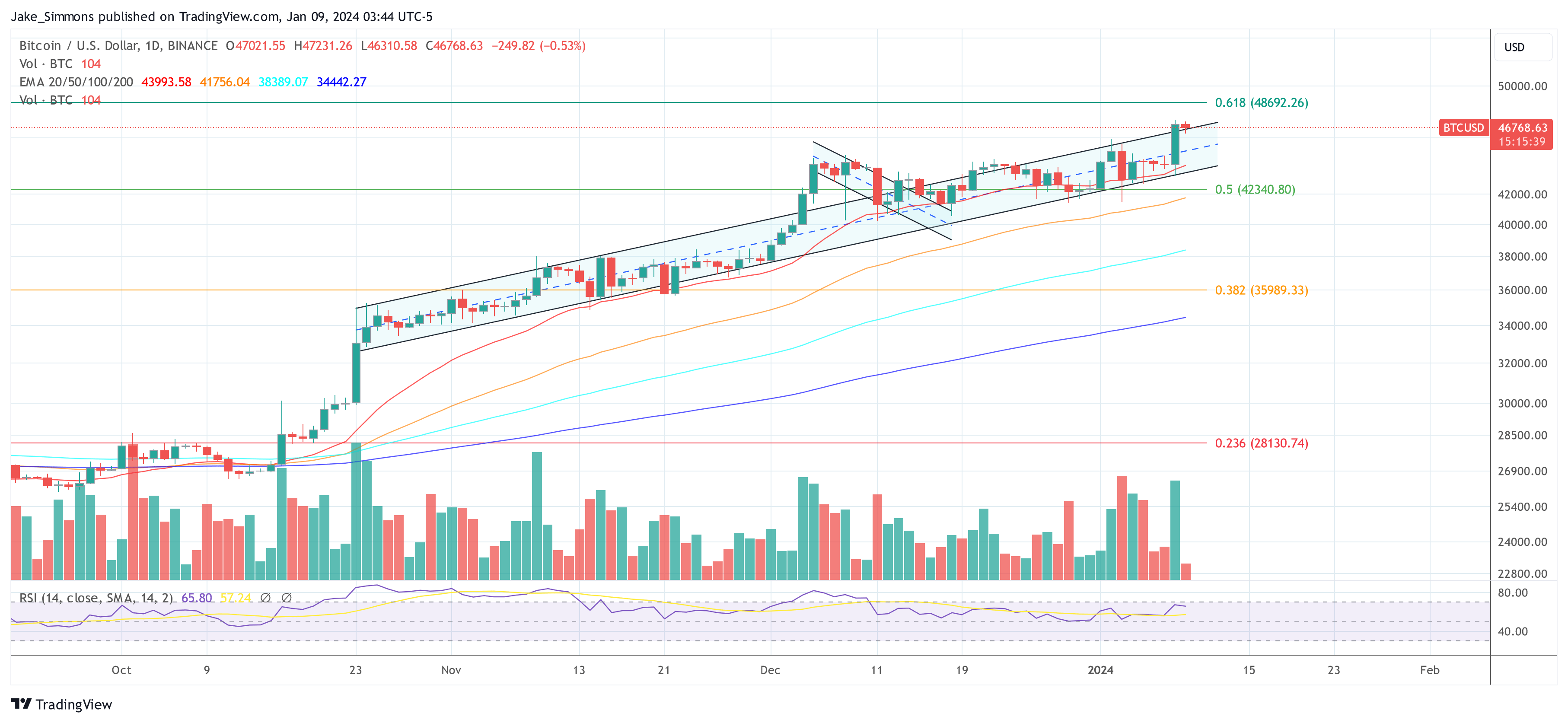Why Spot Bitcoin ETFs Could Trade At A 8% Premium To NAV
“I think the spreads will be very competitive and tight. The market maker community is resilient and prepared to offer a lot of liquidity,” Browne . However, he highlighted a critical concern, saying, “I think it’s going to be the premium to NAV… US broker dealers can’t trade Bitcoin cash inside their broker dealers. So you’re going to have to trade hedges over futures and trade it on a premium, and then take that off, and I think there is a lot of complexity there.”
This complexity, according to Browne, arises from the cash creation model forced by the SEC and regulatory constraints that limit direct Bitcoin trading within US broker dealers, compelling them to rely on futures for hedging. He expressed, “What I think, potentially, you could see 8% of premium above fair value. It’s a big number, but let’s see how it plays out.”[Browne] thinks bid-ask spreads on spot ETFs will be tight but (thx to cash only creations) premiums could be as high as 8%. That’s really high and I’m a bit shocked tbh. For context Canada spot ETFs are cash creations and their premiums are very small.. albeit the occasional 2% day.
The crypto community is closely monitoring the SEC as it approaches a critical deadline to decide on the first batch of several spot Bitcoin ETF applications by tomorrow, January 10. Prominent asset managers such as BlackRock, Fidelity, Ark Invest, Bitwise, Franklin Templeton, Grayscale, WisdomTree, and Valkyrie are among those with pending applications.
Browne believes that the approval of spot Bitcoin ETFs could attract substantial investor interest, projecting massive inflows over the first year. “I expect investors to add at least $2 billion to spot Bitcoin ETFs within the first 30 days they trade, if approved. For the full year, I see $10 billion-$20 billion in the funds,” he noted. This prediction underscores the significant interest and potential market impact of spot Bitcoin ETFs.
At press time, BTC traded at $46,768.














